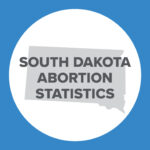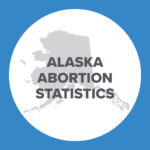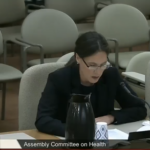Lies, Damn Lies, and the Women’s Health Protection Act

This is Issue 69 of the On Point Series.
The “Women’s Health Protection Act” (WHPA) has been circulating in Congress since 2013. That is the year Planned Parenthood announced it was moving away from the slogan “pro-choice.” The abortion industry had become frustrated with talk of “choice,” partly because it may imply that taxpayers can choose not to subsidize abortion and doctors and nurses can choose not to perform it. Since then the catchword has become “access,” implying that the only “choice” worth protecting is a choice to maximize the number of abortions. And that is the ideology behind this bill.
The legislation, reintroduced this year as H.R. 3755, is endorsed by President Biden and Vice President Harris, and with the support only of Democrats passed the House of Representatives 218 to 211 on September 25. It moves next to the U.S. Senate. Abortion advocates hope to scare the public into supporting it, by warning them about the alleged excesses of the Texas Heartbeat Act, SB8, and the prospect that the Supreme Court may reverse its Roe v. Wade abortion decision. They say the WHPA will “codify Roe” in federal law.
And that is, quite frankly, a lie.
Roe treated abortion as part of a right of reproductive privacy, commonly known as a “right to be let alone.” It was a negative right against active interference by government in what the Court called a decision between the woman and her doctor. Hence the Supreme Court, applying Roe, has invalidated laws that prohibit abortion, but upheld many laws protecting women’s health, ensuring an informed decision, recognizing a right for physicians and others to choose whether or not to participate in abortion, and allowing state and federal governments to encourage childbirth over abortion through their funding decisions.
In its Planned Parenthood v. Casey decision of 1992, the Court shifted its rationale to individual “liberty” but upheld several pro-life laws in Pennsylvania that pro-abortion groups had attacked. A state could not prohibit abortion outright before viability (the time when the child may survive outside the womb if delivered), but it could regulate abortion in ways that do not place an “undue burden” on the woman’s freedom to choose abortion.
The WHPA has no use for either Roe or Casey. It creates a positive entitlement to ready “access” to abortion, enlisting every federal and state agency in the country to actively protect the abortion industry rather than women.
That may seem an exaggeration. Let me illustrate it with two points.
First, Roe said a law requiring that abortions be performed by a licensed physician is valid throughout pregnancy, and 38 states have such laws to this day. The WHPA would invalidate all those laws, by insisting that the right to provide abortions belongs to any “health care provider” including a “certified nurse-midwife, nurse practitioner, and physician assistant” (Sec. 3 (3)). How is women’s health promoted by making it illegal to require abortionists to graduate from medical school?
Second, the WHPA says that even a law that “significantly advances the safety of abortion services or the health of patients” must be invalidated, unless its supporters can prove by “clear and convincing evidence” that this goal cannot be met by a policy that is “less restrictive” — that is, more friendly to the abortionist’s convenience or profit margin (Sec. 4 (d)). How could such proof ever be obtained? It seems one would have to pass the more “pro-abortion-access” law first, and then watch as women die. This is not a women’s health protection act — abortion itself has more rights than women do.
The WHPA complains that since 2011, states and localities have passed “nearly 500 restrictions” on immediate and unregulated access to abortion — which includes informed consent laws, health and safety regulations, parental involvement for unemancipated minors, and other modest laws upheld by the federal courts and widely supported by Americans (Sec. 2 (a)(9)).
Another barrier to immediate “access,” of course, is the existence of doctors, nurses, and hospitals that decline involvement in abortion. Laws ensuring their freedom of choice have been passed with bipartisan support by Congress and almost every state. Such laws are completely consistent with Roe. But under the WHPA, a law allowing a hospital to choose against elective abortions on its premises would be attacked, because it compromises the unlimited federal right of each of the hospital’s “health care providers” to perform late-term abortions. Most hospitals in the U.S. do not perform such abortions now. Catholic hospitals, providing one-sixth of all hospital beds in the country, are bound by their moral convictions not to perform abortions at all – and these hospitals would especially be under attack, as the WHPA nullifies all state and federal laws that conflict with it, including the Religious Freedom Restoration Act (Sec. 5 (a)(1)).
Ironically, the bill’s Findings declare that abortion restrictions are guilty of reducing access to “other essential health care services” that abortion providers also offer (Sec. 2 (a)(14)). This ignores the fact that abortion giant Planned Parenthood has steadily reduced its provision of other services as it expands its share of the abortion business. The claim becomes especially absurd when one realizes that the WHPA could be used to shut down hundreds of the nation’s hospitals serving women.
This “Findings and Purpose” section, taking up half the 27-page bill, contains more baseless rhetoric than factual findings in other respects. It claims that abortion restrictions serve “white supremacy and anti-Black racism” and that abortion access is especially “deficient” for people of color (Sec. 2 (a)(5)) – although Black women, tragically, already have three to four times the abortion rate of white women in the U.S. It also speaks of “obstacles” to abortion access for low-income women (Sec. 2 (a)(18)) – although even research by Planned Parenthood’s own former research affiliate, the Guttmacher Institute, has found that low-income women on Medicaid have twice the abortion rate of other women in their state, growing to four times that rate if their state subsidizes Medicaid abortions. For the WHPA, these alarmingly high figures are not high enough.
The Findings even cite international human rights law, suggesting that the “right to life” cited by the International Covenant on Civil and Political Rights requires ready access to abortion when “a person’s life and health” (the latter term to be defined by the abortionist) are at risk (Sec. 2 (a)(17)). But the Covenant actually says: “Every human being has the inherent right to life. This right shall be protected by law. No one shall be arbitrarily deprived of his life” (ICCPR, Article 6.1, emphasis added). It asserts this right for all members of the human species, not only for the people seen as “persons” by abortion advocates. It underscores this by insisting that a death sentence “shall not be carried out on pregnant women” (Article 6.5). Obviously, this is intended to protect not the woman convicted of a capital crime (who may be executed when no longer pregnant), but that separate, innocent human being in her womb.
That separate being is nowhere mentioned in this bill. Rather, abortion is to be treated as favorably as “medically comparable outpatient gynecological procedures” (e.g., dilation and curettage on a non-pregnant woman to remove polyps or excess uterine tissue), and even “analogous non-gynecological procedures” such as “vasectomy, sigmoidoscopy, and colonoscopy” (Sec. 2 (a)(10)). To say that under this bill, the unborn child has the status of an unwanted growth is to say too little: That child has the status of the contents of your colon.
This refusal to mention what abortion is leads the Findings into unintentional howlers, as when it promotes a right “to terminate a pregnancy after fetal viability” (Sec. 2 (a)(2)). That phrase of course describes the effort to induce a live birth – unless one takes additional steps to ensure a dead child rather than a live one. But to make that distinction, one might have to mention the existence of a distinct being who had “life.”
More amazingly, even the words “woman” and “women” nowhere occur in the legally operative provisions of the bill. The Findings, while claiming that abortion restrictions constitute “gender oppression” and discrimination against “women” (Sec. 2 (a)(7)), explain that the bill aims to promote abortion for “all people with the capacity for pregnancy – cisgender women, transgender men, non-binary individuals, those who identify with a different gender, and others” (Sec. 2 (a)(8)). This, too, creates language problems. Like earlier versions of the WHPA, HR 3755 claims to promote “women’s ability to participate equally in the economic and social life of the United States” (Sec. 2 (b)(2)) – that is, to participate equally with men. But its first Finding declares that abortion access “is central to people’s ability to participate equally in the economic and social life of the United States” (Sec. 2 (a)(1), emphasis added).
In short, this legislation is a mess. Its factual claims are false, its analogy to Roe v. Wade tendentious, its extremism unprecedented, its commitment to women’s health highly questionable, and its human rights claims incoherent. A review of its enforcement mechanism allows one to add the charge of rank hypocrisy.
As stated earlier, the WHPA is gaining traction from efforts to scare people about the Texas law restricting abortion after a fetal heartbeat can be detected. That law’s critics seem to agree that its most egregious feature is its enforcement through private citizens’ lawsuits against those who perform and abet illegal abortions. U.S. attorney general Merrick Garland has said it enlists citizens as “bounty hunters.” Others accuse it of raising a “private army,” and pro-abortion attorney Alta Charo in the New England Journal of Medicine calls it “deputizing and weaponizing the public to stop abortions.”
How is the WHPA enforced? By civil lawsuits against any policy that shows insufficient enthusiasm for abortion, and against any government official implementing or enforcing that policy. Under a “Manager’s Amendment” targeting pro-life laws like that of Texas, added to the bill before House passage, a private citizen filing suit to stop an illegal abortion is also “considered a government official” who can be sued and assessed financial penalties. Suits enforcing the WHPA can be brought by the attorney general (making Merrick Garland the U.S. marshal leading the posse), or by “any individual or entity, including any health care provider or patient,” who is “adversely affected” by the existence of a policy or lawsuit seeking even modest limits on abortion (Sec. 8, emphasis added). And “bounty hunter” provisions like this have been part of the WHPA, the flagship legislation of the “abortion rights” movement, since it was first introduced in 2013. Pro-lifers in Texas were only taking a page from what has long been their opponents’ book. In other words, WHPA supporters think “weaponizing” the public is fine, as long as only abortionists and their most dedicated allies are armed.
The question is whether the Senate will realize that it is this egregiously misnamed “Women’s Health Protection Act” that should be aborted.
Richard Doerflinger, M.A. is an associate scholar of the Charlotte Lozier Institute.

























